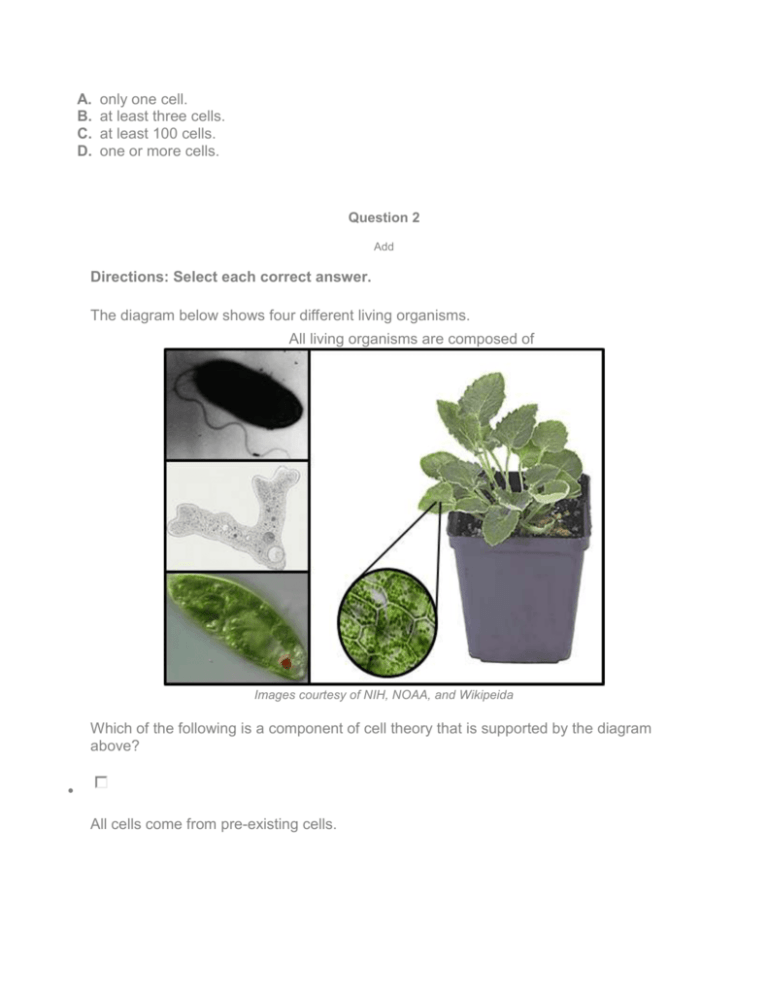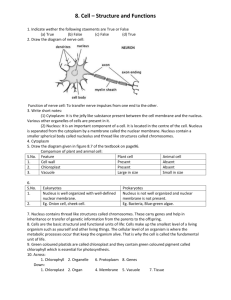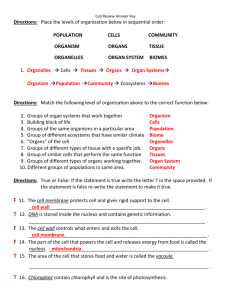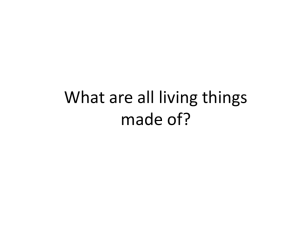only one cell. at least three cells. at least 100 cells. one or more cells
advertisement

A. B. C. D. only one cell. at least three cells. at least 100 cells. one or more cells. Question 2 Add Directions: Select each correct answer. The diagram below shows four different living organisms. All living organisms are composed of Images courtesy of NIH, NOAA, and Wikipeida Which of the following is a component of cell theory that is supported by the diagram above? All cells come from pre-existing cells. Cells are the basic units of life. All living organisms are composed of cells. All cells have the same shape and function. Question 3 Add Which of the following statements is part of the cell theory? A. B. C. D. Cells are the basic units of living things. All living things are made up of one or more cells. All cells come from pre-existing cells. all of these Question 4 Add Examine the diagram of the cell below. Adapted from image courtesy of Wikipedia What can you conclude about this cell? A. B. C. D. The cell is most likely a human cell. The cell is most likely a plant cell. The cell is most likely a bacterium cell. The cell is most likely an animal cell. Question 5 Add Which of the following is similar among all living organisms on Earth? A. B. C. D. cellular function social behavior physical appearance all of these Question 6 Add Different plant and animal species have a great variety of body structures that help them survive and reproduce. Which of the following is also true? A. The individual cells of plants and animals function in very similar ways. B. The individual cells of plants and animals do not share any similarities. C. The individual cells of plants and animals cannot perform specialized functions. D. The individual cells of plants and animals do not contain genetic information. Question 7 Add Which of the following structures would normally be found in a plant cell but not in an animal cell? A. B. C. D. nucleus cell wall cell membrane mitochondrion Question 8 Add During science class, a group of students went on a field trip to a nearby pond where they collected samples of pond water and pond plants. The students used a microscope to study cells in their samples. They also took samples of their own cheek cells and studied them using the microscope. The results are shown in the following table. Sample Nucleus Cell Cell Wall Cytoplasm Chloroplast Vacuole Membrane cheek cells X X X X pond plant cells X X X X X X pond organism #1 X X X X X X pond organism #2 X X X X Using the table provided, determine which of the following pairs of organelles or structures can be found in both plant and animal cells. A. B. C. D. cell wall and chloroplast cell wall and nucleus vacuole and chloroplast cell membrane and nucleus Question 9 Add During science class, a group of students went on a field trip to a nearby pond where they collected samples of pond water and pond plants. The students used a microscope to study cells in their samples. They also took samples of their own cheek cells and studied them using the microscope. The results are shown in the following table. Sample Nucleus Cell Cell Wall Cytoplasm Chloroplast Vacuole Membrane cheek cells X X X pond plant cells X X X X X X pond organism #1 X X X X X X pond organism #2 X X X X X Looking at the chart provided, the students need to develop a classification scheme to distinguish plant and animal cells. The presence of which of the following structures/organelles would be most useful for this purpose? A. B. C. D. cell wall nucleus plasma membrane vacuole Question 10 Add Select the group of organelles that is common to both plant cells and animal cells. A. B. C. D. nucleus, cytoplasm, ribosomes, chloroplasts ribosomes, cell membrane, mitochondria, cytoplasm cytoplasm, mitochondria, cell wall, nucleus cell wall, ribosomes, cell membrane, mitochondria Question 11 Add Which of the following cell structures is found in plant cells but not in animal cells? A. B. C. D. chloroplast cell membrane ribosome cytoplasm Question 12 Add Which of the following is a difference between plant cells and animal cells? A. B. C. D. Animal cells carry out photosynthesis; plant cells do not. Animal cells undergo cell division; plant cells do not divide. Plant cells have a rigid structure, while animal cells have a more flexible structure. In plant cells, DNA is stored in the mitochondria; in animal cells, the DNA is stored in the nucleus. Question 13 Add Ian is looking at cells using a microscope. He sees a nucleus and a large vacuole in the central area of a cell. What type of cell is he most likely looking at? A. B. C. D. white blood cell plant cell animal cell prokaryotic cell Question 14 Add The diagram below compares the structures of an animal cell and a bacterial cell.









